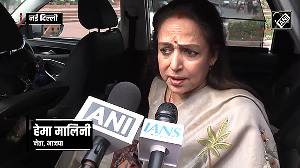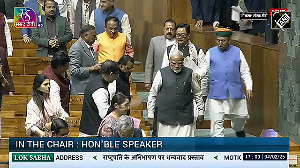RBI also retained its GDP growth forecast at 7.6 per cent

The Reserve Bank, on Tuesday, cut the key interest rate by 0.25 per cent and introduced a host of measures to smoothen liquidity supply so that banks can lend to the productive sectors and indicated accommodative stance going ahead.
Given weak private investment in the face of low capacity utilisation, a reduction in the policy rate by 0.25 per cent will help strengthen growth, RBI Governor Raghuram Rajan said in the first bi-monthly monetary policy review for the 2016-17 fiscal, which began on April 1.
Accordingly, the repo rate, at which RBI lends to the financial system, has come down to 6.5 per cent.
The cut was broadly in line with expectations. However, the stock market reacted negatively and the BSE index, Sensex, was down nearly 300 points.
Rajan also took a host of measures on the liquidity front, starting with the narrowing of the policy rate corridor to 0.50 per cent from the earlier 1 percentage point, which resulted in the reverse repo rate - at which banks can park excess funds with the RBI - being reset at 6 per cent.
The policy said the average overnight borrowings by banks have increased to Rs 1,935 billion in march from Rs 1,345 billion in January.
Stating that the inflation objectives are closer to being realised and price-rise will hover around the 5 per cent mark for the remainder of the fiscal, Rajan reaffirmed that the monetary policy will continue to remain accommodative to address the growth concerns.

RBI also retained its GDP growth forecast at 7.6 per cent, on the assumption of a normal monsoon and a boost to consumption through the implementation of the Seventh Pay panel recommendations.
The central bank said it expects the implementation to hurt inflation by 1-1.5 per cent over a two year period, but added that the shock will not be as strong as that felt during the implementation of the sixth pay panel suggestions.
Rajan welcomed the government move to amend the RBI Act to create a monetary policy committee, saying it will further strengthen the policy s credibility.
He also welcomed the government's adherence to the path of fiscal consolidation, calling it as a commendable commitment this will support the disinflation process going forward.
The Reserve Bank reiterated the need for a better translation of its policy actions into the lending rates by banks, adding that measures like reduction in the small savings rates, refinements in the liquidity management framework announced in the policy and the introduction of the marginal cost of lending based lending rates will help in this regard.

Rajan had last cut the key rates at the September 2015 review by a surprising 0.50 per cent, stating that the RBI is "frontloading" through the measure but affirmed that the central banks continues to hold the accommodative stance.
Conducive government actions and macroeconomic data had heightened expectations of a rate cut by Rajan in the first bi-monthly policy announcement for 2016-17.
At 5.18 per cent for February, the headline inflation was trending lower than expectation, making it easier for the RBI to achieve its goals.
The government's affirmation of sticking to the fiscal consolidation path in the budget by promising to bring down the fiscal deficit to 3.5 per cent in the current fiscal, and also a reduction in the small savings rates flagged by RBI in earlier policy announcements only bolstered the demands for the cut.
Repeated contraction in the factory output, which came in at a negative 1.5 per cent in January, had also upped the demands for the growth-boosting measure of a cut in the key policy rates.
With the liquidity being tight in the recent months, there were expectations of measures on this front.
On the regulatory side, RBI said it is mulling a regime where large borrowers (which account for a bulk of the NPAs) shall be mandated to go to the market for a part of their funding rather than relying on banks completely.
RBI also proposed to redefine bank branches and permissible methods of outreach.
It will also issue a discussion paper to go ahead on the differentiated banking and look into the introduction of custodian banks and wholesale banks, the policy document said.
Photographs: PTI, Reuters






 © 2025
© 2025